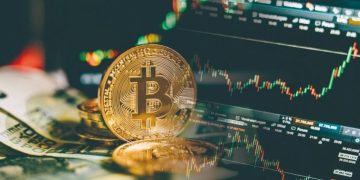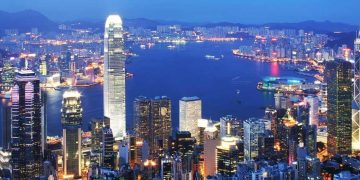The Known and the Unknown
We are often reminded of the different states of knowledge. There are “known knowns” – things we are certain we know. Then there are “known unknowns” – things we are aware we don’t know. And there are also “unknown unknowns” – things we don’t even realize we don’t know. This concept, as stated by the US Secretary of Defense in 2002, sets the stage for our exploration of prediction and its challenges.
Studying Japan for Insights
Researching Japan is a means to gain a better understanding of China. Our examination of Japan focuses on its past, while our contemplation of China is future – oriented. Despite the futility of most prediction attempts (including this one), people constantly strive to predict the future because it directly impacts each of us. Before making specific predictions about China and the world’s past and present, we must first identify some general rules regarding the development of things and prediction itself. Rules are, to a large extent, the only thing we can rely on when it comes to the future. While we usually can’t accurately predict it, we can understand and summarize rules from the past and use them to make hazy sketches and speculations about what’s to come.
Prediction: An Age – old and Futile Game
Prediction is like the eternal Sisyphusian game of humanity. Since the dawn of civilization, people have been constantly attempting to predict the future, yet no one has truly succeeded. Even the most elite intellectuals or prophets merely develop their models and theories and pretend to foresee the future. Models are inherently flawed. They are a superficial and simplified way of viewing the world. They are not reality; they are just reluctant tools we use to interpret historical reality. Models can be manipulated and abused. In contemporary academia, economists and financial experts have over – mathematized problems, turning economics into a study of financial mathematics theory. True thinkers are thus pushed towards political economy and economic history, losing their ability to analyze and interpret data. Data analysis has become so profound, high – threshold, and specialized that it has lost many opportunities to combine with qualitative thoughts about the essence of things. It often focuses on self – consistency, choosing appropriate formulas or curves (such as the normal distribution) just to make the model work, yet becoming detached from reality in many scenarios. Similarly, crises and bubbles manifest in different forms and evolve from different logics each time. Theorists tend to look back at historical data to find the best explanatory models, often ignoring the most crucial variables of the present. New variables and new paths of action are usually qualitative and hard to observe, making them difficult to model or mathematize, and thus overlooked by theorists.
Possible Laws of Prediction: Another Sisyphusian Attempt
Despite the overall unpredictability of the world, the relative “predictability” of different things varies. We attempt to understand these differences and add our (perhaps laughable) contribution to the history of humanity’s Sisyphusian prediction efforts. Economic factors are more predictable than political ones. Economic dynamics, for the most part (though not always), follow market laws, and the development trajectory of the market is relatively predictable. Politics, especially Byzantine – style court politics, is filled with personal emotions, choices, high – level alliances, secrets, and sudden twists, making it extremely difficult to predict based on public information. Medium – term trends are more predictable than short – term ones, while long – term trends are the most difficult to predict. Short – term trends are heavily influenced by numerous contingencies with short – acting forces, and these accidental factors often dominate the outcome. In contrast, medium – term trends have many noises that cancel each other out, leading to more reasonable results. For example, it was hard to predict the fall of the Soviet Union right after World War II in 1945, but it happened in 1991, 46 years later. It was also difficult to predict the collapse of the Bretton Woods system after World War II, but it occurred in 1971, as an inevitable result of the rapid re – emergence of Japan and Germany. Although the direct trigger for Japan’s rise was the Korean War, Japan’s ultimate re – emergence was inevitable because the US eventually needed a strong and healthy Japan to counter the Soviet Union’s influence in Asia. While the Korean War and other factors affected the speed and process of Japan’s rise, the rise itself was inevitable. Therefore, medium – term trends can be predicted using logic, while short – term trends are influenced by more accidental factors. In fact, short – term trends often involve political and social events with Planck – like movements that make the results unpredictable. However, in medium – term predictions, these Planck – like movements interact and cancel each other out, resulting in outcomes more inclined to be the result of pure market and economic forces. Long – term trends are the hardest to predict. The reason is simple: humans lack long – term imagination and in – depth scientific knowledge across all disciplines. As a result, we can’t predict the long – term development curve and path of technology, the most significant factor influencing long – term trends. This is why humans always underestimate short – term technological development but also underestimate long – term technological development. Moreover, in the long term, economic, political, social, international political, and war – related factors interact, preventing pure economic and market factors from dominating the direction of development. Therefore, long – term trends are basically impossible to predict accurately. Hence, the best prediction attempts should focus on the medium term (5 – 10 years) in terms of time and target economic and market factors while avoiding political and social factors when it comes to the analysis object. To be clear, economic and market factors refer to all the objective data – based target factors covered by “modern economics”, while “social factors”, in our understanding, are more like “social group movements” resulting from Planck – like interactions and mutual influences among people, including social trends, group cognition, public opinion evolution, and public discussions. Compared to these unpredictable political and social factors, predicting economic factors with objective data undoubtedly has higher logic and accuracy.
The Nature of All Prophecies: Linear Extrapolation
All prophecies are linear extrapolations. Except for contrarian traders who take risks, no one truly makes predictions with the idea of “inflection points” or “boom – bust cycles” in mind. All so – called “inflection point” predictions are either about accelerating growth after growth or decelerating growth after growth, which still maintains the original trend, only with a change in speed. Few people realize how dynamic the world is and how strong its self – regulating and self – correcting abilities are. Rising prices attract more supply rather than simply pushing prices higher, and falling prices clear out production capacity, thereby raising prices. All things, whether in the short, medium, or long term, experience cycles of prosperity and decline. Contrarian traders may use this to predict stock trends or industry cycles, but in a more macro – narrative, few people have the courage to make such contrarian predictions because they seem absurd and lack any factual basis (data, clues, signals, etc.). Predictions without evidence are just opinions. Everyone can have an opinion, and countless opinions are generated every moment in the world. But opinions without evidence (unless they come from extremely important people) are just noise. Truly important people don’t usually freely express their opinions and predictions as it brings them no benefits. So, how should we view the future? First, we must recognize that cycles of prosperity and decline exist in everything, and all things have self – regulating and self – correcting mechanisms. No matter what the current trend is, a reversal will surely come. We must think clearly about what will happen after the reversal and how things will evolve, and be prepared for the upcoming reversal in all aspects. Second, the magnitude and timing of the reversal (both the time before it occurs and its duration) are difficult to predict. The current trend will indeed continue for an unpredictably long time. In fact, no one (even those involved in the situation) can predict the trigger point and magnitude of the reversal. Third, in the face of the certainty of the reversal itself and the uncertainty of its magnitude and timing, sufficient safety margins should be reserved in any investment decision based on historical experience and the most extreme assumptions. The key is to recognize that change and invariability are complex and intertwined elements and act accordingly.

Inertia: Lack of Reverse – adjustment Mechanisms
In financial markets, there is a short – selling mechanism where one can borrow assets they don’t own, sell them, and then buy them back after the price drops, thereby making a profit even when asset prices fall. However, this short – selling mechanism rarely exists in most real – world contexts. In fact, the vast majority of people in the real world work to promote something rather than oppose it. Their paid labor is to “advocate”, “promote”, and “achieve”, not to “hinder”. Therefore, there is always a tendency to over – promote in all real – world undertakings. In industry, if people are not optimistic about a certain business or system, they usually just leave. They can’t short – sell like in the financial market, that is, “borrow and sell their business”. So enthusiasts or self – deceivers will still push the slow progress of what might be ruins, and this could last for a long time. In fact, most people in the world have their own positions and interests deeply rooted in the social and corporate structures, closely related to public or private expressions and personal skill accumulation. It’s extremely difficult to reverse these positions as quickly as changing a financial market position. At most, they can only make a slow turn, and most of these turns may not be successful. Therefore, people don’t easily change their positions and views. In the real economy and society, most opinions and actions are bullish. Even when people leave, most are forced to do so rather than choosing to do so voluntarily (i.e., short – selling). This is because most people lack the skills, courage, liquidity protection, and background flexibility to leave their current positions. Due to the lack of reverse – adjustment mechanisms, changes in the world are often slow and full of inertial obstacles. When they do occur, they can be as drastic as the collapse of a great edifice or the transformation of the sea into mulberry fields. A shift in the trend of the times means the downfall of countless individuals and families.
Mutation: Rapid Reverse Change After the End of the Inertia Period
For the reasons discussed above, the world has more inertia than people usually imagine, and at turning points, the changes are faster than anyone could have thought. Most changes require long – term patient accumulation and a slow process, and then suddenly “happen” on the surface one day. For example, the decline of the Soviet Union may have started in the 1970s. During this process, countless unreasonable historical regression – type events and evolutions accumulated. But the change suddenly accelerated in 1991, exceeding everyone’s imagination. Looking back, everyone realizes that they had endured “historical deception” or self – deception for a long time, living in unbelievable lies and self – comfort. The subprime mortgage crisis and the NASDAQ bubble are the same. There was always a long – term “this time is different” lie accumulation and mutual deception, and then the collapse happened in an instant. In fact, this process of “slow quantitative change and rapid qualitative change” applies to almost all bubble bursts and collapses of great systems. The collapse of all systems is like this. On the surface, they seem stable and impregnable, but from a certain moment, problems and crises start to spread under the surface and gradually show various collapse signals. However, these systems or companies have already involved too many existing interests and people, and their only chance of survival in the cruel world is to keep operating as they are and be part of it. This “viscosity” and “inertia” exacerbate the system’s deceptiveness and inertia, and it can exist in any enterprise, organization, country, or asset class – basically in all possibilities. When a turn occurs, outsiders are usually surprised by the fact itself or the “rapidity” of everything, while insiders have already been psychologically prepared. Therefore, the most important thing is to identify long – term, slow, inertial, and irreversible trends, and then make long – term judgments with the end in mind. At the same time, never make simple linear extrapolations based on short – term trends. There are too many short – term fluctuations and medium – term waves in the world, but all these trends are fleeting and easily reversed. In fact, these are not “trends” but just “changes” or “fluctuations”. So, the key is to distinguish between “long – term trends”, “short – term noises”, and “medium – term fluctuations”. “Short – term noises” are impossible to predict, “medium – term fluctuations” can be predicted to some extent but with a high failure rate, and only “long – term trends” can be predicted to some degree. Day – traders and momentum speculators focus on noises, hedge funds and most secondary – market investors focus on fluctuations, and only a few investors focus on trends. However, the biggest problem with focusing on trends is that in the short and medium term, it may seem stupid, go against the consensus, and even result in losses. Many people won’t understand that you’re a long – term investor and may mistake you for an unlucky trader or speculator. Anyway, all of this can’t be proven or disproven. From a micro perspective, in the modern economy, entrepreneurs hold most of the asset power. They create wealth and bubbles, and their wealth and fate depend on their risk – taking nature and the timing of their risks. Entrepreneurs are not smarter, more capable, or more hard – working than ordinary people, migrant workers, construction workers, or cleaners. Successful entrepreneurs have all taken risks at the right time and environment and received rewards, while failed entrepreneurs are the opposite. There are far more failed entrepreneurs than successful ones in the world, but we usually only see and admire the successful ones. We often marvel at their risk preference and entrepreneurial spirit, not realizing that this is almost the entire essence of their success. Successful entrepreneurs can’t or are hard – pressed to change their path – dependence. They always seem to believe that they can expand their wealth by taking the right risks again because that’s what they’ve done. From a micro perspective, it’s the aggressive expansion and blind leverage of these entrepreneurs (what Schumpeter called “animal spirits”) that lead to the accumulation and generation of bubbles and their ultimate burst.
Possible Law: Inertia Maintenance – Sudden Change – Excessive Change – Correction
Because things often have the nature of insufficient short – selling during their development and are often over – bought or over – promoted until their internal driving forces can no longer sustain nominal development, things have the characteristics of inertia + mutation: changes often accumulate subtly under the guise of inertia and then brew into sudden and astonishing changes. This leads to the “inertia maintenance – sudden change – excessive change – correction” fluctuation cycle, which is like a waveform with decreasing amplitude or a pendulum with high friction. It is this law that causes stock prices (or nominal development) to fluctuate with the changes in fundamentals (or underlying driving factors). George Soros once commented that changes in all things rarely stop at the equilibrium point. There will always be over – reactions or over – adjustments, followed by corrections. The reason is simple. The vast majority of people can only make linear extrapolation predictions. They can’t even predict inflection points, let alone the timing of reversal movements. They have no foresight, no courage, and can’t time the market. Therefore, regardless of whether the nominal change is along or against the trend line, the vast majority of people (except for a few traders and contrarian investors) can only assume that the change will continue in this direction, at most predicting the magnitude and speed of the change. This causes over – reactions. However, even if we understand the “inertia maintenance – sudden change – excessive change – correction” fluctuation cycle, it’s still difficult to predict the specific timing of each step. Because it’s hard to predict the position of the market, the group, the majority of people, or the average consensus cognition, as well as the direction and speed of change. In fact, the “inertia maintenance – sudden change – excessive change – correction” fluctuation cycle applies not only to the real world but also to the financial market. Nominal changes represented by prices are easy to observe but difficult to predict. In contrast, the underlying driving factors or fundamentals hidden beneath the surface are difficult to observe, but once their change principles and trends are understood, they are (at least relatively) easier to predict. Fundamental investors look at the actual changes in underlying driving factors, while technical investors look at nominal changes. However, all investors can only benefit from the nominal changes on the surface (i.e., the prices of capital markets or real assets), just as we in the real physical world are only affected by the surface changes of the world (rather than the conceptual changes in underlying driving factors). Returning to the real world, the “inertia maintenance – sudden change – excessive change – correction” is not the only paradigm of the world’s operation, but understanding this potential pattern will help us understand many things in the world. The many futile predictions we make later in this article may not come true, but the patterns and laws summarized in this chapter may have greater significance for the world.
China: The Road to the Present
Catching Up and High – speed Growth
When developing countries aim to catch up with developed countries, transitioning from an agricultural society to industrialization and urbanization, high economic growth rates are inevitable. The technologies required for industrialization have already been developed, and developed countries have demonstrated their usage methods, so imitation is sufficient. Future development prospects are relatively easy to predict, so the speed of industrial structure transformation is naturally fast. In fact, the Four Asian Tigers in the 1980s and China after the 1990s achieved the same high – speed growth as Japan in the 1950s.
Learning from Japan’s Example
When China began to look at the world at the end of the 19th century, among countries like Europe, the US, and Japan, Japan was the most relevant example to learn from. The obvious reason is that Japan and China are so similar in history, traditions, political systems, and national characteristics. For thousands of years, China regarded Japan as insignificant, believing it to be inferior. However, Japan grew rapidly after the Meiji Restoration in 1868, defeated China in the Sino – Japanese War of 1895, and defeated Russia in the Russo – Japanese War of 1905, creating a miracle of that era and becoming a key learning object for Chinese revolutionaries and reformers. In contrast, China’s Westernization Movement, which started in 1861, after more than 30 years of arduous operation, was finally defeated in the Sino – Japanese War of 1895 and declared bankrupt. After 1895, although modernization continued, the Hundred – Day Reform in





































